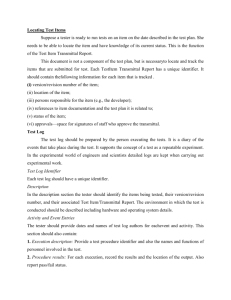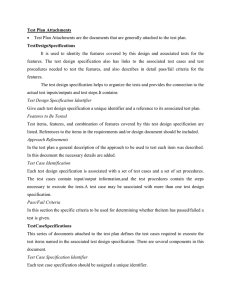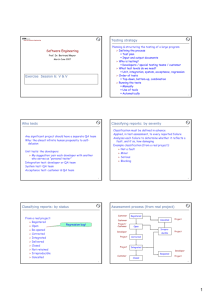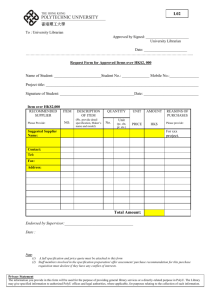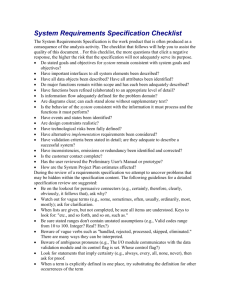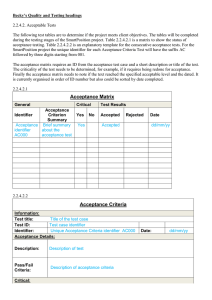Test Plan: Design, Cases, Procedures & Reporting
advertisement
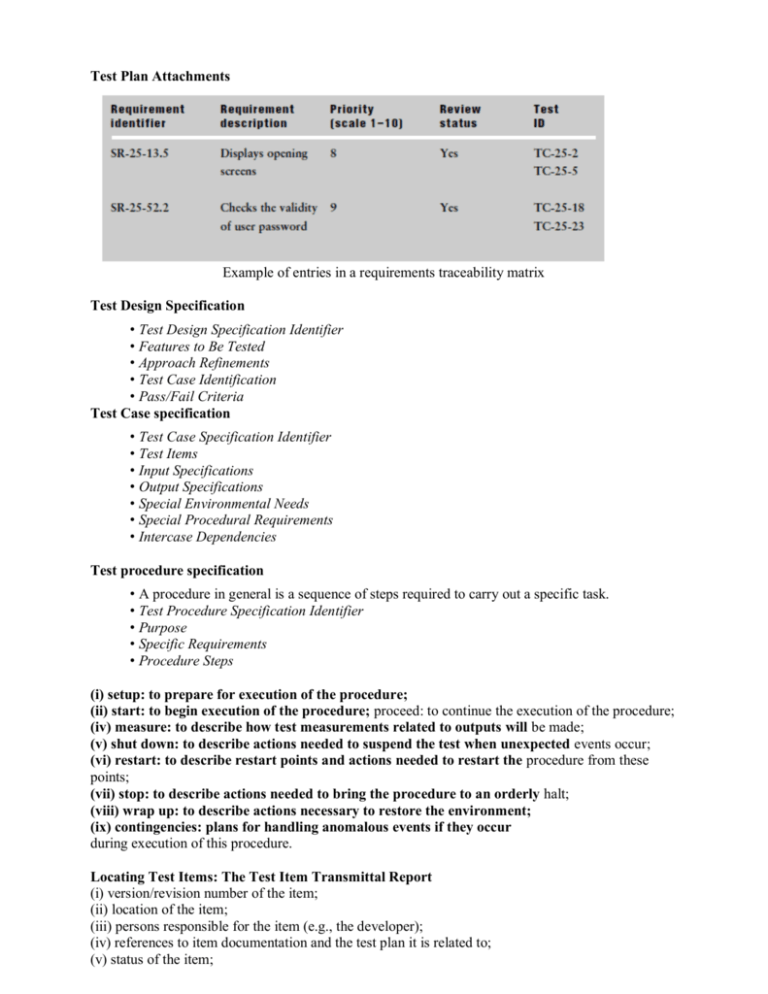
Test Plan Attachments Example of entries in a requirements traceability matrix Test Design Specification • Test Design Specification Identifier • Features to Be Tested • Approach Refinements • Test Case Identification • Pass/Fail Criteria Test Case specification • Test Case Specification Identifier • Test Items • Input Specifications • Output Specifications • Special Environmental Needs • Special Procedural Requirements • Intercase Dependencies Test procedure specification • A procedure in general is a sequence of steps required to carry out a specific task. • Test Procedure Specification Identifier • Purpose • Specific Requirements • Procedure Steps (i) setup: to prepare for execution of the procedure; (ii) start: to begin execution of the procedure; proceed: to continue the execution of the procedure; (iv) measure: to describe how test measurements related to outputs will be made; (v) shut down: to describe actions needed to suspend the test when unexpected events occur; (vi) restart: to describe restart points and actions needed to restart the procedure from these points; (vii) stop: to describe actions needed to bring the procedure to an orderly halt; (viii) wrap up: to describe actions necessary to restore the environment; (ix) contingencies: plans for handling anomalous events if they occur during execution of this procedure. Locating Test Items: The Test Item Transmittal Report (i) version/revision number of the item; (ii) location of the item; (iii) persons responsible for the item (e.g., the developer); (iv) references to item documentation and the test plan it is related to; (v) status of the item; (vi) approvals—space for signatures of staff who approve the transmittal. Reporting Test Results • Test Log – Test Log Identifier – Description – Activity and Event Entries • Execution description • Procedure results • Environmental information • Anomalous events • Incident report identifiers • Test Incident Report 1. Test Incident Report identifier: to uniquely identify this report. 2. Summary: to identify the test items involved, the test procedures, test cases, and test log associated with this report. 3. Incident description: this should describe time and date, testers, observers, environment, inputs, expected outputs, actual outputs, anomalies, procedure step, environment, and attempts to repeat. 4. Impact: what impact will this incident have on the testing effort, the test plans, the test procedures, and the test cases • Test Summary Report 1. Test Summary Report identifier: to uniquely identify this report. 2. Variances: these are descriptions of any variances of the test items from their original design. 3. Comprehensiveness assessment: the document author discusses the comprehensiveness of the test effort as compared to test objectives Summary of results: the document author summarizes the testing results. 5. Evaluation: in this section the author evaluates each test item based on test results. 6. Summary of activities: all testing activities and events are summarized. 7. Approvals: the names of all persons who are needed to approve this document are listed with space for signatures and dates. Test-related documents as recommended by IEEE[5]
